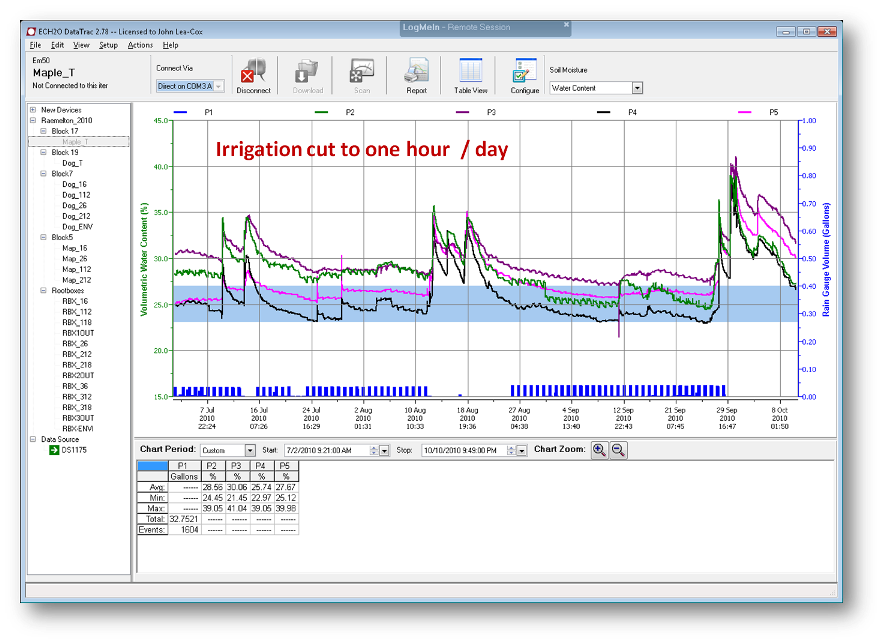You are here
Network Development
This project is all about developing advanced wireless soil moisture and environmental sensor networks that can be deployed in commercial nurseries, greenhouses and green roof systems. These systems gather environmental information that can be used to better understand how and when to irrigate. This information can then be used by the grower to optimize irrigation efficiency and reduce inputs and costs associated with overwatering. 
The networks collect data from a number of environmental sensors, both aerial (such as air temperature, relative humidity, windspeed, sunlight and rainfall) together with soil moisture, electrical conductivity and soil temperature data. A network of "nodes" logs and transmits this data to a central "processing" computer. A software program then imports this information into a database and graphically portrays the data in a form that is meaningful to the grower or manager (see graphic at right).
This task is easier for soil-based (in-ground) production environments, since the soil moisture does not change very rapidly (e.g. hour by hour). However, it becomes more challenging when measuring soil moisture and determining at what point to irrigate large acreages, as the logistics of collecting and managing data from many sensor nodes becomes an issue, especially when the terrain is hilly or trees are large.
In contrast, container systems are very dynamic. Environmental variables can change from minute to minute, and so monitoring and control issues become extremely rapid and demanding. These systems must work in real-time, meaning that the sensor network issues become more complicated if we are to control irrigation events based upon minute-by-minute data.
